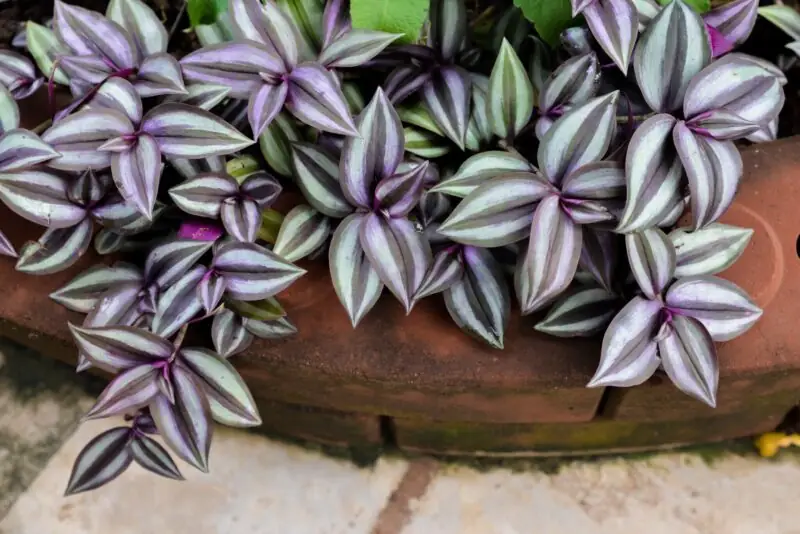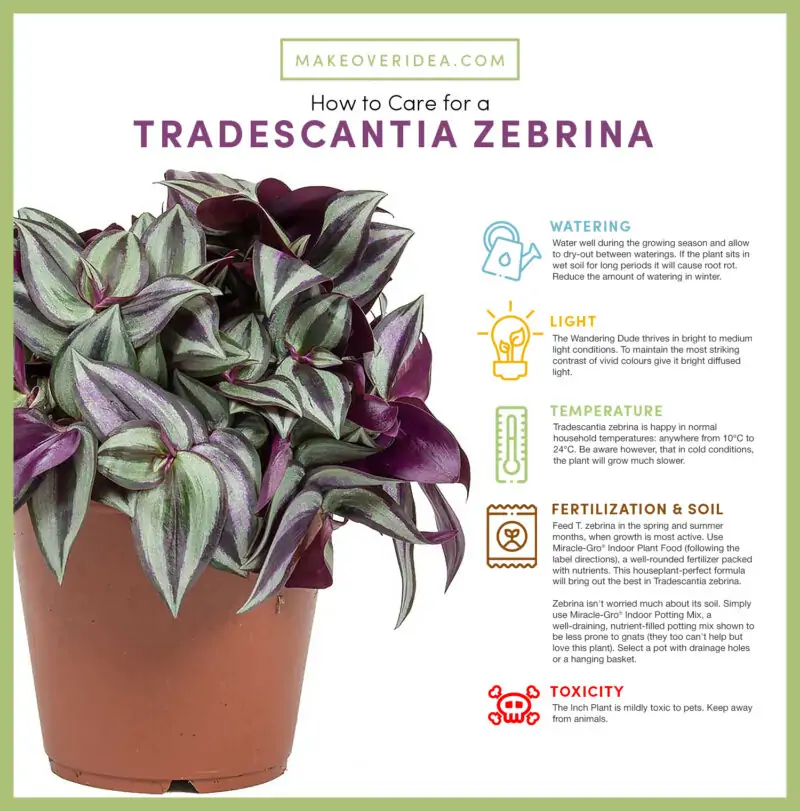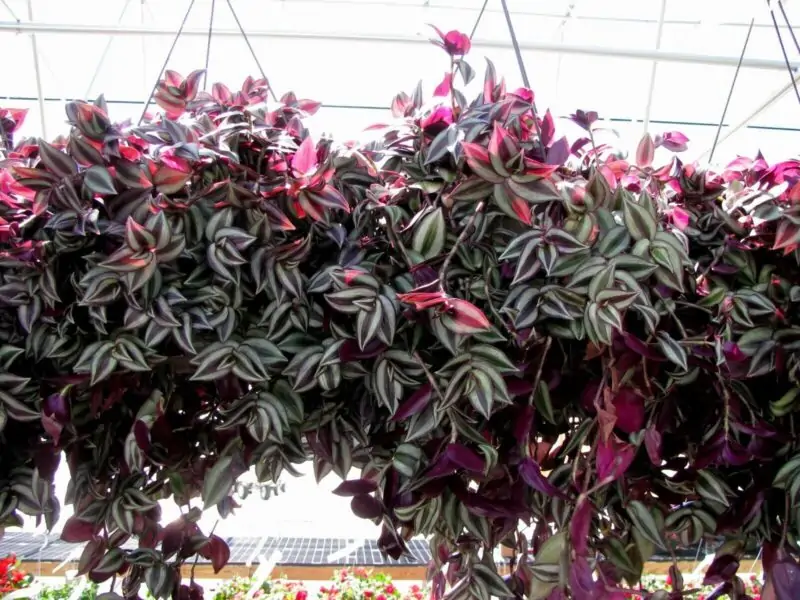How to Make Your Wandering Jew Plant Bushy: Tradescantia Zebrina Care and Growing Tips

Howdy there, plant lovers! If you adore greenery in your home like me, then you’ve probably heard of the Wandering Jew plant. Also known as Tradescantia Zebrina, this beautiful creeping plant has become a staple houseplant for many due to its lovely foliage with purple stripes.
But if your own wandering jew plant has leggy stems or lacks bushiness, don’t worry – I’m here to help! In this guide, we’ll explore everything you need to know about making your wandering jew bushy and thriving. So grab a cup of tea (or coffee) and let’s get started!
First things first – why is having a bushy Wandering Jew important? Well, friends, it’s simple. Fuller growth means more leaves which equals better photosynthesis leading to healthier plants overall.
Now that we got that cleared up let’s dive deeper into understanding our beloved wandering dude!
Understanding the Wandering Jew Plant (Tradescantia Zebrina)
Origins & History
The name “Wandering Dude” comes from how easily these plants propagate via stem cuttings, always seeming to be on the move!
This fast-growing native South American creeper belongs to the Commelinaceae family. It was named after John Tradescant Sr., an English gardener who introduced it back in 1629 from Central America.
Characteristics & Features
Tradescantia zebrinas are unique for their gorgeous leaves. They have dark green tops with silver stripes underneath, alongside intense purple coloration on some parts.
Types of Plants
There are several varieties available worldwide, but just two major types; those without stripes, commonly called the Inch Plant, and those with stripes, known as Zebrina.
Wandering Jew Plant Care Guide

Light Requirements
The wandering jew prefers bright indirect light or dappled shade. It’s a classic low-light indoor plant. Avoid leaving it in direct sunlight for too long, as it may burn the foliage.
Watering Needs
This creeping plant requires moderate watering. Ensure the soil isn’t overly dry or too soggy. The best practice is to water once the surface of your potting mix has started drying out.
Soil & Pot Selection
Choose a well-draining pot that’s at least two inches bigger than its current size. Make sure there are drainage holes in the bottom.
African violet soil mixture (a blend of peat moss, perlite, and vermiculite) works great for optimum growth due to good moisture retention and adequate drainage.
Fertilization & Nutrient Requirements
For best results, fertilize during the growing season using an all-purpose balanced fertilizer every 2-3 weeks. Dilute it per the instructions on the packaging label. Overfeeding can cause root burning challenges when carried out excessively.
How To Make Wandering Jew Bushy: Pruning And Maintenance

When And How To Prune Your Plant
Prune mainly during late winter or early spring before new growth begins. This encourages branching and stimulates bushier, fuller plants overall.
Cut off leggy stems (those without any leaves at their base), dead leaves, and prune older branches occasionally.
Tips For Avoiding Leggy Growth
To help prevent legginess, provide enough light so your plant doesn’t have to stretch towards windows seeking sun rays!
Encouraging Bushy Growth Through Pinching And Cutting Back
Pinch back newly grown tips when they reach around one inch high. Gently pull them away from the stem tips to stimulate active branching and promote new growth.
Another way to encourage bushy growth is to cut back older stems about an inch from their base. This encourages fresh foliage and the development of side shoots, promoting bushy growth.
Maintaining The Ideal Environment For Growth
To keep your plant healthy, provide it with bright indirect light, sufficient water, and fertilizer. Maintain a consistent watering schedule while avoiding overfeeding!
Propagating Wandering Dude Plants
The Propagation Process
Wandering Jews are among the easiest houseplants to propagate! Start by taking cuttings around four inches long from healthy plants during spring or summer.
How To Choose The Right Stem Cuttings
Select cuttings that have several leaves and nodes present on them, as they tend to root faster than others.
Rooting In Water Or Soil
You can either directly place your stem cuttings in soil or opt for rooting in water until roots sprout. Then transplant them into pots filled with potting mix.
Transplanting And Caring For New Plants
Ensure proper maintenance, like regular watering, enough sunlight, and appropriate fertilization per the earlier instructions, until established. Repot when necessary into larger-sized containers.
Dealing With Leggy Wandering Jew And Other Common Issues
Causes Of Legginess
Too little light or too much nitrogen fertilizer can lead to rapid, long, leafy growth without adequate support, eventually resulting in weak, leggy stems.
How To Address Leggy Growth
Prune off any affected parts while also exposing more of the lower leaves (those closer to the base) to sunlight. This induces branching for fuller-looking wandering dudes.
Preventing & Treating Common Pests & Diseases
Aphids and spider mites are common pests that feed on these delicate plants. Spider mites love warm, dry environments, so ensure a humid atmosphere near them.
Tradescantia Zebrina Plant FAQs!
Absolutely! They thrive when grown in hanging baskets or planters. The long stems look fantastic cascading down.
It may be time to repot it into something bigger with fresh soil. Trim some of its overgrown stems to help it settle back into an ideal shape.
Conclusion
There you have it, folks, the ultimate guide to making your wandering jew bushy – Tradescantia Zebrina Care and Growing Tips!
Remember, taking care of any houseplant requires patience and attention, but with proper nurturing, these plants will flourish. So don’t give up on them just yet!
Keep experimenting and tweaking things until you find what works best for your wandering jew; just know that nature’s beauty takes time.
Thanks for joining us today on this wonderful journey through caring for our beloved Tradescantia Zebrinas!